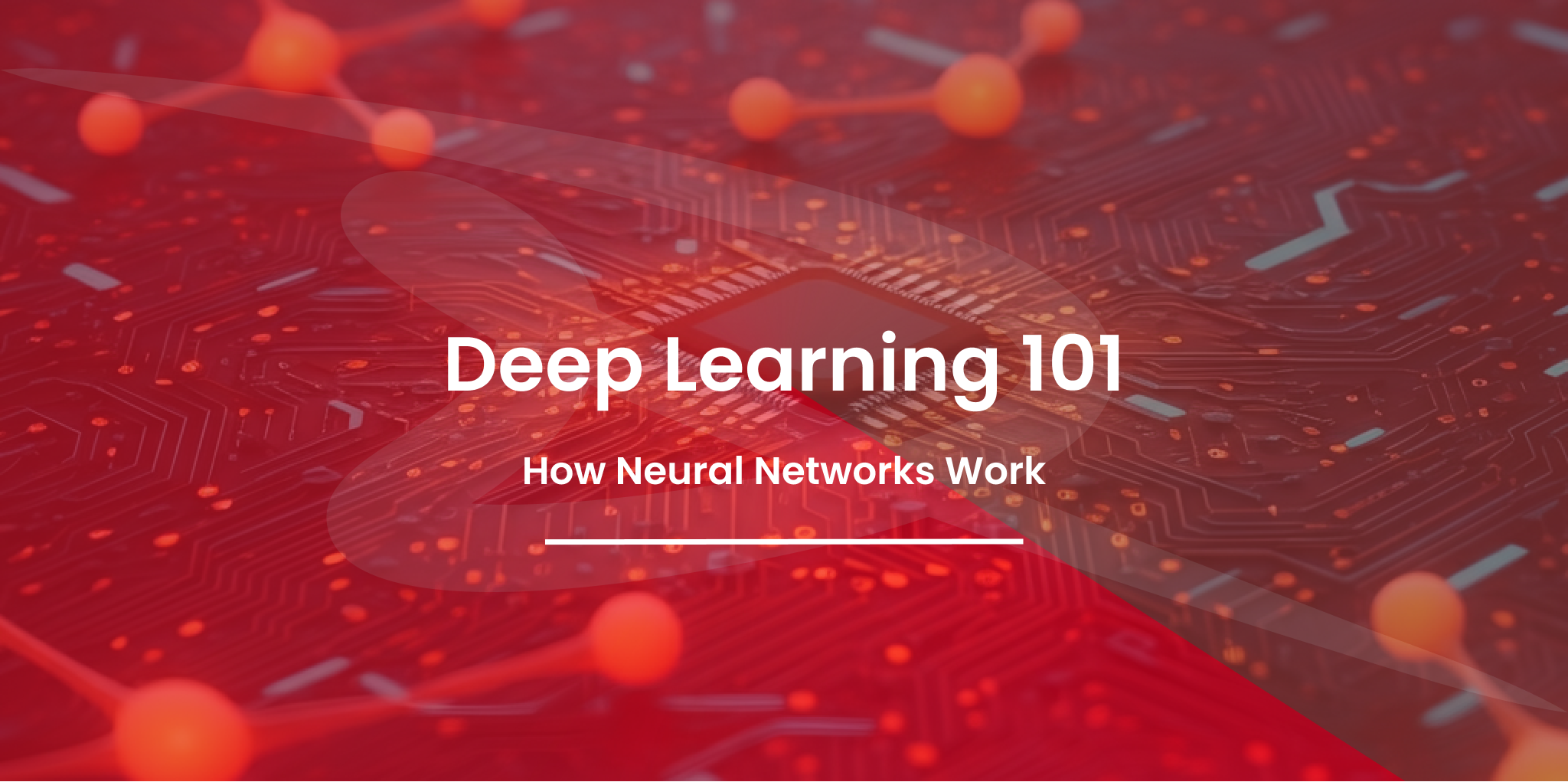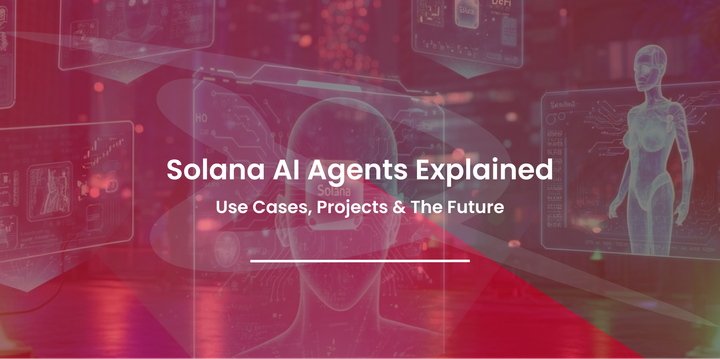Deep Learning 101: How Neural Networks Work
Learn the basics of deep learning! Explore neural networks, their structure, types, and how these systems revolutionize AI in this beginner-friendly guide.

Deep learning has taken the tech world by storm, driving innovations in areas like autonomous driving, facial recognition, natural language processing, and even personalized shopping experiences. For aspiring data scientists, AI enthusiasts, and anyone considering a career in artificial intelligence, understanding how deep learning and neural networks work is essential.
This post will give you a comprehensive guide to neural networks, the backbone of deep learning. From the basics to the deeper intricacies, you'll learn what makes these systems tick and how to start building your first deep learning models.
What Is Deep Learning, and Why Does It Matter?
Deep learning is a branch of artificial intelligence and machine learning (ML) that focuses on algorithms inspired by the structure and function of the human brain. It uses neural networks for learning and decision-making, handling vast datasets and uncovering patterns far beyond the capabilities of traditional algorithms.
Why is deep learning so important? Its applications are everywhere—self-driving cars that detect pedestrians, voice assistants like Siri, or Netflix recommending your next binge-worthy series. Whether for business efficiency or technological breakthroughs, deep learning drives innovation and competitive advantages that every organization craves.
Key Difference Between Machine Learning and Deep Learning
Machine Learning involves feeding algorithms structured data and teaching them to make decisions through explicit programming. Conversely, deep learning doesn’t require structured data or feature engineering, as neural networks can automatically determine which features or patterns to focus on, given sufficient data.
Think of it this way—machine learning is like a high-functioning calculator, while deep learning mirrors the human brain, sorting through extraordinary complexity and adapting on its own.
Click here to read more about machine and deep learning
What Are Neural Networks?
At its core, a neural network is a set of algorithms modeled loosely on the human brain. Just as our brain consists of interconnected neurons and synapses exchanging information, a neural network has artificial neurons (also known as nodes) and layers where data flows and transformations occur.
Neural networks are the framework on which deep learning is built. Think of them as the scaffolding that supports and organizes the powerful processes within.
Inspiration from the Human Brain
Neural networks borrow heavily from neuroscience. Neurons in the brain fire when they receive electrical signals. Similarly, artificial neurons "fire" when they process data. Synapses, which are the connections between neurons in the brain, correspond to weights in a neural network that determine the importance of particular inputs.
But don't worry, you don’t need a neuroscience degree to understand this—just a willingness to explore the fundamentals of how data flows!
Components of Neural Networks
The three main components of neural networks are:
- Neurons – Units that receive data, process it, and pass it to the next layer.
- Layers – Neural networks have an input layer, hidden layers, and an output layer. The hidden layers do the heavy lifting by extracting features and patterns from the data.
- Weights – Think of weights as influencers that evaluate how important one node’s data is to another.
Architecture of Neural Networks
The Flow of Data
Neural networks process data layer by layer. Here’s a simplified breakdown of how it all comes together:
- Input Layer – Takes raw data, such as an image or a sentence.
- Hidden Layers – Perform computations that identify features, patterns, and significant relationships within the data.
- Output Layer – Generates predictions or classifications, such as identifying an image as ‘dog’ or ‘cat.’
Types of Neural Networks
Different neural networks are tailored for different tasks:
- Feedforward Neural Networks
These are the simplest forms of neural networks, where information moves only in one direction—from input to output.
- Convolutional Neural Networks (CNNs)
Designed for image and video recognition. Think of them as artists that sift through pixels to identify patterns like edges, shapes, and colors.
- Recurrent Neural Networks (RNNs)
Perfect for processing sequential data like language, time-series data, or even handwriting generation. RNNs consider dependencies between past inputs when making predictions.
- Generative Adversarial Networks (GANs)
These fascinating networks are used for creating entirely new content, such as AI-generated art, realistic face swaps (deepfakes), or even new music compositions.
How Neural Networks Learn
Forward Propagation
Forward propagation is the first step when a neural network processes data. Input data is fed into neurons, weighed, and passed through activation functions to calculate predictions.
Activation Functions
Activation functions determine which data flows forward through the network and often introduce non-linearity so that the neural network can model complex data. Here are three common ones:
- ReLU (Rectified Linear Unit) – Quick and efficient, ReLU activates positive values while ignoring negatives.
- Sigmoid – Converts inputs into probabilities within the range 0 to 1.
- Tanh – Scales inputs between -1 and 1, ideal for symmetric data.
Backpropagation and Optimization
Backpropagation is where neural networks truly learn. After making predictions in forward propagation, the network calculates errors using a Loss Function. These errors guide weight adjustments using Gradient Descent to improve accuracy.
The learning rate controls how drastically weights are updated—too high, and the model overshoots accuracy; too low, and the training process drags.
How to Train Neural Networks
Now that we’ve covered the theory, here’s what training a neural network looks like step by step:
- Prepare the Dataset
Large, diverse datasets are critical for effective training. Data augmentation helps by artificially enriching datasets (e.g., rotating images or adding noise).
- Tweak Hyperparameters
Adjust key model settings like learning rate, batch sizes, and architecture depth for optimal performance.
- Run Validation and Evaluation
Divide data into training, validation, and test sets to avoid overfitting. Evaluate models using metrics like accuracy, recall, and precision.
Tools for Building Neural Networks
Popular Frameworks
- TensorFlow & Keras – Intuitive tools, ideal for beginners and experts alike.
- PyTorch – Known for flexibility and real-time computation graphs.
- Other Frameworks – Options like Caffe and MXNet are fine-tuned for specific use cases.
Choosing the right tool depends on your goals—TensorFlow is ideal for production, while PyTorch excels in research and experimentation.
Real-World Applications of Neural Networks
Neural networks power some of the most exciting innovations today, including:
- Computer Vision – Object detection, image classification.
- Natural Language Processing – Language translation, sentiment analysis.
- Speech Recognition – Voice assistants like Alexa.
- Generative AI – From creating photorealistic images to deepfake videos.
Neural Networks Come with Challenges
Neural networks face hurdles such as:
- Overfitting – Prevented by using techniques like dropout or regularization.
- Computational Power – Training requires hefty processing power, often available only via powerful GPUs or cloud platforms.
- Ethics – AI bias and fairness remain hot-button issues requiring careful oversight.
Bringing It All Together
Deep learning has revolutionized technology and business, showing us the boundless possibilities of artificial intelligence with neural networks. Whether you're a data scientist or a tech enthusiast, exploring this fascinating field offers not only career potential but also the chance to shape the future of AI.
Why not take the plunge today? Build your first neural network or explore powerful frameworks like TensorFlow and PyTorch. Who knows—you might just create something extraordinary.




Comments ()